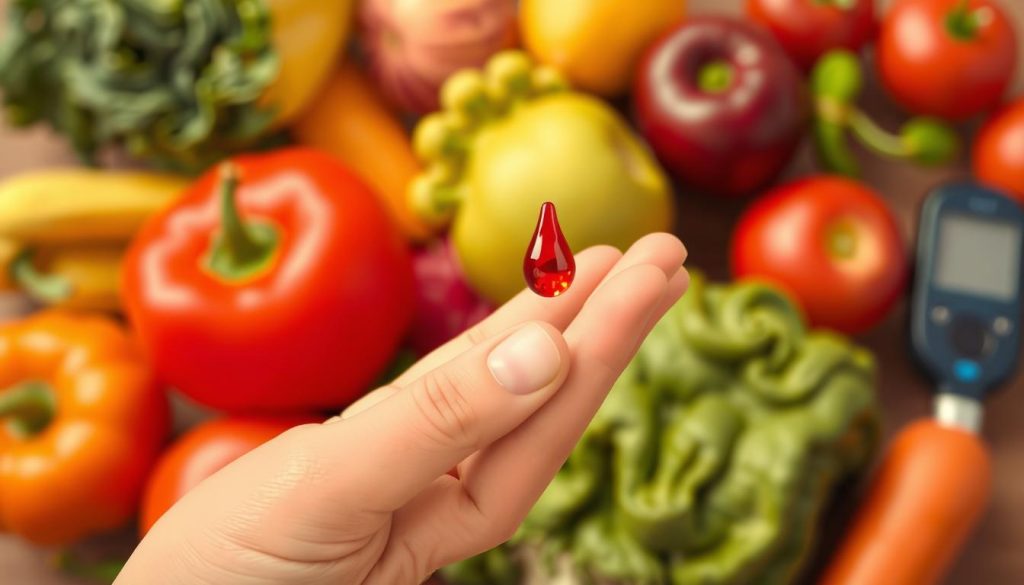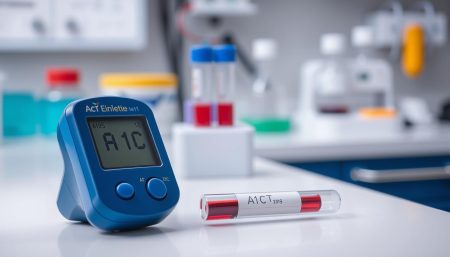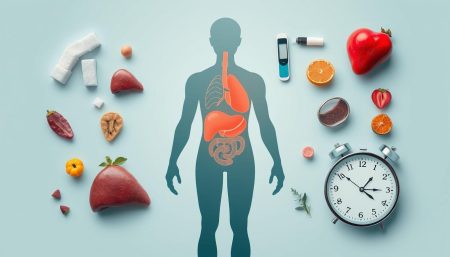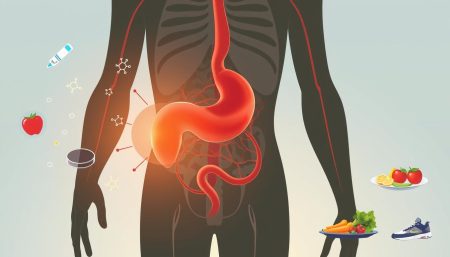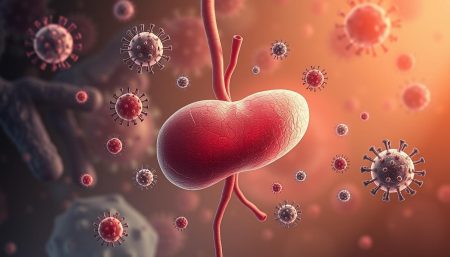The world is seeing more cases of diabetes mellitus. This calls for a big push to know the diabetes mellitus signs symptoms. In our busy lives, spotting the early signs of diabetes is key to managing this health issue. The main sign, blood sugar problems, can sneak up on us quietly.
As diabetes becomes more common, it’s vital to catch it early. This can help stop the disease from getting worse. This part focuses on the importance of watching your health closely. It helps us understand the subtle signs our bodies send us.
Understanding Diabetes Mellitus and Its Impact
Diabetes mellitus is a long-term condition where blood sugar levels are too high. This can cause serious health problems if not managed well. It’s important to know the diabetes mellitus symptoms and the impact of diabetes for those at risk and those already diagnosed.
The body can’t process glucose well, leading to symptoms and complications. Recognizing these symptoms early is key to avoiding severe health issues. Common symptoms include feeling very thirsty, needing to urinate a lot, feeling hungry all the time, being tired, having blurry vision, and wounds that don’t heal quickly.
Diabetes can affect almost every part of the body if not controlled. This makes managing overall health very challenging. Here’s how untreated diabetes can impact major body systems:
| Body System | Impact of Diabetes |
|---|---|
| Cardiovascular System | Increased risk of heart disease, arterial damage leading to strokes and heart attacks. |
| Nervous System | Potential nerve damage causing neuropathy, pain, and numbness, mainly in hands and feet. |
| Kidney | High blood sugar can damage the kidneys, potentially leading to kidney failure or severe kidney disease. |
| Eyes | Risk of diabetic retinopathy, which can cause significant vision impairment or blindness. |
To address these diabetes health concerns, managing blood sugar levels is key. A healthy lifestyle and regular doctor visits are also important. Catching diabetes mellitus symptoms early and treating them can greatly reduce the impact of diabetes. This improves quality of life and lowers the risk of serious complications.
The Crucial Window: Recognizing Prediabetes
Understanding prediabetes is key to diabetes prevention. It’s a warning sign that blood sugar is too high but not diabetes level. Spotting early signs of diabetes can stop type 2 diabetes from happening.
Spotting prediabetes means noticing small body changes. Signs include more thirst, needing to pee a lot, feeling tired, and blurry vision. Here’s how to spot these signs:
- Drinking more water and peeing more often as your body tries to get rid of extra sugar.
- Feeling more tired than usual, which might mean your body can’t use sugar well.
- Seeing things less clearly because high blood sugar makes your eyes swell.
Diabetes prevention is vital at this time. Making healthy lifestyle changes can delay or stop diabetes. Here are some steps to take:
- Eat a balanced diet with less processed sugar and more fiber.
- Do regular aerobic exercise and strength training.
- See doctors for check-ups and to monitor your blood sugar.
| Lifestyle Change | Benefits |
|---|---|
| Improved Diet | Helps manage weight and blood sugar levels |
| Increased Physical Activity | Improves insulin sensitivity and cardiovascular health |
| Regular Health Monitoring | Early detection of possible problems |
By catching early signs of diabetes and acting fast, you can protect your health. Taking action early in prediabetes is very important. With the right lifestyle choices, many people keep their blood sugar in check and live active, healthy lives.
Hyperglycemia Explained: Blood Sugar Red Flags
It’s important to know the signs of hyperglycemia symptoms to avoid serious health problems. When blood sugar levels get too high, the body shows clear high glucose signs. Spotting these signs early can help prevent long-term damage.
Hyperglycemia, or high blood glucose, causes several symptoms that might seem like other health issues. It’s key for those with diabetes or at risk to check their blood sugar often. Here are some important signs to watch for:
- Frequent urination, a condition called polyuria
- Increased thirst, known as polydipsia
- Sudden, unexplained fatigue or tiredness
- Blurred vision, which may fluctuate
- Headaches
- Difficulty concentrating
These symptoms need quick attention to avoid serious health issues like diabetic ketoacidosis. Regular blood sugar checks and talking to a healthcare provider can help manage hyperglycemia symptoms and the causes.
Identifying Signs of Diabetes in Women
It’s important to know the signs of diabetes in women. Women’s bodies change in ways that can hide the usual signs of diabetes. This means we need to look closely at the diabetes symptoms unique to females. These signs can help us catch diabetes early and start treatment right away.
Women might show different signs of diabetes than men do. Spotting these signs early is key to getting the right care.
- Gestational Diabetes: This type happens during pregnancy and might be the first sign of diabetes for a woman. It’s important to watch for it after pregnancy because it raises the risk of getting type 2 diabetes later.
- Polycystic Ovary Syndrome (PCOS): This is an endocrine disorder linked to insulin resistance. It can lead to type 2 diabetes.
- Yeast Infections: These infections can happen more often in women with diabetes because of high blood sugar levels.
Ignoring these signs of diabetes in women can lead to serious health problems. Learning about diabetes symptoms unique to females helps women get the care they need sooner.
Diabetes Mellitus Signs Symptoms
It’s important to know the diabetes mellitus signs symptoms early. This helps in managing the condition better. This section will cover the common signs of diabetes and why they happen. It aims to help you spot diabetes symptoms effectively.
Diabetes symptoms show up in different ways. They can affect your body and how it works. Knowing these signs is key to getting medical help on time.
- Frequent urination and excessive thirst
- Unexplained weight loss or gain
- Fatigue and irritability
- Blurred vision
- Slow healing of cuts and wounds
- Tingling, pain, or numbness in hands/feet
The table below shows how symptoms differ between Type 1 and Type 2 diabetes. It’s vital to know the signs of each type.
| Symptom | Type 1 Diabetes | Type 2 Diabetes |
|---|---|---|
| Frequent Urination | Common | Common |
| Excessive Thirst | Very common | Common |
| Unexplained Weight Loss | Very common | Sometimes |
| Fatigue | Common | Common |
| Blurred Vision | Less common | Common |
| Slow Healing | Less common | More common |
| Numbness in Extremities | Less common | More common |
Knowing the diabetes mellitus signs symptoms helps you act fast. Early detection and treatment can prevent serious problems. It’s a step towards better health.
Excessive Thirst and Urination: Ominous Signs of Diabetes
If you’re feeling excessive thirst in diabetes and noticing changes in how often you urinate, it’s important to know why. Polydipsia and polyuria are linked to blood sugar levels. Managing these symptoms is key to staying healthy.
Diabetes mellitus causes blood sugar levels to rise, leading to symptoms that need attention.
Understanding Polydipsia: The Increased Thirst Connection
Polydipsia, or feeling thirsty more often, is a sign of diabetes. It often comes with frequent urination diabetes. The body can’t balance sugar, so it loses a lot of water. This makes people drink more water.
It’s vital to understand and manage this symptom, whether you have diabetes or are at risk.
Decoding Polyuria: Frequent Urination and Its Implications
Polyuria, or needing to urinate a lot, happens when there’s too much glucose in the blood. The kidneys remove this glucose, taking fluids from the body. This leads to more urination.
This symptom can disrupt daily life and affect the body’s fluid balance. Fluid balance is important for cell function and overall health.
To learn more about how Ozempic works by mimicking GLP-1 and helping in stabilizing blood sugar levels, visit our detailed article on effective diabetes management strategies.
Unexplained Weight Changes and Diabetes Risk
Diabetes mellitus can show up in many ways, making it hard to spot. It can cause weight gain or loss, which are big clues. Knowing these signs early is key to managing the disease.
Looking into why weight changes happen helps us understand how our body handles sugar and insulin. It also shows us health risks we might face.
Navigating Unintended Weight Loss
When you lose weight without trying, it might mean your body can’t handle glucose well. It starts using fat and muscle for energy. This might seem good, but it’s a sign of serious glucose issues.
Feeling hungry all the time and losing a lot of weight are big red flags. They point to diabetes and the need for medical help.
Weight Gain: A Lesser-Known Symptom
On the other hand, weight gain can mean your body isn’t using insulin right. This leads to poor glucose digestion and more fat storage. It raises your risk of diabetes and makes managing it harder.
Seeing your weight go up, and it’s not just a little, is a warning sign. It’s time to check for diabetes to catch any problems early.
Both weight loss and gain are signs of diabetes. They show how important it is to watch your weight and understand diabetes-related weight changes.
Skin Manifestations: The Dermatological Signs of Diabetes
Looking into the dermatological signs of diabetes shows how skin health and blood sugar levels are connected. This connection is key for catching diabetes early and managing it well. Many diabetic skin symptoms point to problems with glucose levels, leading to different skin issues linked to diabetes.
Diabetic dermopathy is a notable skin condition diabetes causes. It shows up as light brown, scaly patches on the shins. These patches are harmless but tell us a lot about the disease. Necrobiosis lipoidica, with its thicker, yellowish patches, also hints at glucose management problems.
- Hyperglycemia-triggered skin infections
- Xerosis (dry skin) that often leads to itching and discomfort
- Acanthosis nigricans that thickens and darkens the neck folds and other body parts
| Skin Condition | Appearance | Common Body Area |
|---|---|---|
| Diabetic Blisters (Bullosis diabeticorum) | Blister-like lesions; similar to burn blisters | Forearms, Hands, Feet, Toes |
| Eruptive Xanthomatosis | Small, firm yellow bumps with a red halo | Buttocks, Thighs, Crook of the elbows |
Knowing and understanding these dermatological signs of diabetes helps manage diabetic skin symptoms right away. It also shows why controlling diabetes is so important. If you notice any skin changes, see a doctor for a check-up and a diabetes plan that fits you.
Specific Diabetes Symptoms in Men
It’s key to know gender-specific diabetes symptoms for early diabetes detection in men. Certain male diabetic signs are important for early diagnosis and effective management.
Spotting diabetes symptoms in men often looks at signs not seen as much in women. Men might feel these symptoms more strongly or in a way that needs special attention.
- Decreased libido and sexual dysfunction
- Sudden changes in muscle mass
- Greater incidence of apnea during sleep
These male diabetic signs are important warnings. They could mean diabetes is starting or getting worse. Changes in muscle mass or function might seem odd but could be linked to blood sugar changes.
| Sign | Commonality in Men | Potential Complications |
|---|---|---|
| Decreased libido | High | Related to hormonal changes and nerve damage |
| Muscle mass changes | Medium | May indicate ketoacidosis if coupled with other symptoms |
| Sleep apnea | Increasingly recognized | Can exacerbate diabetes complications |
For men, spotting these gender-specific diabetes symptoms is more than just finding a problem. It’s about starting effective management. Talking to doctors when these signs appear can lead to better care and a plan just for you.
Chronic Fatigue: The Energy Drain of Diabetes
Chronic fatigue in diabetes is a big problem that affects daily life and quality of life. This diabetes exhaustion is more than just feeling tired. It’s a deep exhaustion that doesn’t get better with rest and can really limit what you can do.
The start of energy drain in diabetics comes from the body’s trouble using glucose for energy. This is because of insulin resistance or not having enough insulin. When cells can’t take in glucose, you feel tired all the time.

People with chronic fatigue diabetes find it hard to do even simple things. This symptom is important because it lowers life’s quality and can mean blood sugar levels are not well-controlled. It might also mean you need to change how you manage your diabetes.
| Aspect of Life | Impact of Chronic Fatigue |
|---|---|
| Work Productivity | Decreased output and increased errors. |
| Social Interactions | Less participation and withdrawal from social activities. |
| Physical Activity | Reduced frequency and intensity of exercise. |
| Mental Health | Increased risk of depression and anxiety. |
It’s key to spot and tackle diabetes exhaustion. Good management includes checking blood sugar often, eating right, exercising regularly, and getting enough sleep. Talking to a healthcare provider can help make a plan to fight diabetes fatigue. This can boost your energy and improve your life.
Blurred Vision: A Not-So-Blurry Warning Sign
Seeing things blurry can be scary, and it might mean something serious like diabetes. Diabetes eye symptoms include blurred vision, which is a big warning sign. It tells us that blood sugar levels might be too high.
This problem, linked to blurred vision diabetes, can cause serious eye damage if not treated right away.
High blood sugar makes the lens in the eye swell, making it hard to see clearly. This is a sign that something is wrong and needs a doctor’s check-up. Getting your eyes checked regularly is important. It helps catch and treat eye problems linked to diabetes early.
| Symptom | Explanation | Impact |
|---|---|---|
| Blurred Vision | Inability to see fine details, often fluctuating with blood sugar levels. | Can lead to sustained damage to the retina if prolonged and untreated. |
| Color Vision Changes | Difficulty distinguishing between colors; colors may appear washed out or less intense. | Suggests the onset of diabetic retinopathy, necessitating immediate medical attention. |
| Spots or Dark Strings (Floaters) | Small shapes or dark specks that float in one’s vision, often viewed against bright backgrounds. | Typical in cases of diabetic retinopathy, can culminate in partial or total loss of vision. |
Knowing about vision changes diabetes helps people get help early. This can stop serious eye problems. Learning about blurred vision diabetes symptoms is important for managing diabetes well.
Increased Appetite in Diabetes: Understanding Polyphagia
Diabetes often brings a symptom called increased appetite diabetes, or polyphagia. It’s not just feeling hungry more. It’s a constant, uncomfortable hunger that may mean your body is not handling sugar right. Knowing about hunger signs in diabetes is key to managing and avoiding serious problems.
People with diabetes feel hungrier because their bodies can’t turn glucose into energy well. Even though they have plenty of glucose, their bodies think they’re starving. This makes them feel like they need to eat more.
Identifying Signs
- Inexplicable hunger even after eating
- Increased frequency of meals and snacks
- Urgent and persistent desire to eat sweets or carbohydrates
Monitoring and Managing Polyphagia
- Regular monitoring of blood glucose levels.
- Following a balanced diet rich in fiber and proteins to enhance satiety.
- Consulting healthcare providers to adjust diabetes management plans if needed.
Recognizing hunger signs in diabetes and what they mean is very important. If you’re feeling hungrier than usual, talk to a doctor. They can help you change your diet and medicine to better manage your diabetes.
Slow Healing Wounds: Signs That Can’t Be Overlooked
For those with diabetes, slow healing wounds diabetes is a big problem. It shows that blood sugar levels are not under control. The main reasons are poor blood flow and nerve damage from high blood sugar for too long. It’s important to know the signs of non-healing sores diabetes to manage and prevent serious problems.
Wounds that don’t heal, known as non-healing sores diabetes, can lead to infections and serious health issues. It’s key for diabetics and their caregivers to watch for slow-healing wounds. Early treatment can stop serious problems.
- Persistent sores or bruises, mainly on the feet and legs
- Wounds that grow smaller slowly, even with good care
- Redness, warmth, swelling, or pain around a wound that gets worse or doesn’t get better
| Factor | Impact on Healing | Typical Healing Time for Non-Diabetics | Healing Time in Diabetics |
|---|---|---|---|
| Blood Glucose Levels | High levels harm white blood cells | 1-2 weeks | 3-4 weeks or more |
| Blood Circulation | Poor circulation means less nutrients and oxygen | 2-3 weeks | 1 month or longer |
| Infection Risk | Higher risk due to immune system issues | 1-2 weeks | Continuous monitoring needed |
It’s important to understand how slow healing wounds diabetes affects health. Diabetics should see doctors regularly, keep blood sugar in check, and act fast if they notice delayed recovery in diabetics. Learning about non-healing sores diabetes can greatly improve health and life quality.
Tingling or Numbness: The Silent Alarm of Nerve Damage
Feeling tingling numbness diabetes is a warning sign of diabetic neuropathy. This is a serious problem caused by high blood sugar. Nerve damage symptoms diabetes like these are important to notice. They show that your nerves might be getting damaged.
Diabetic neuropathy is common in people with diabetes. It can cause nerve problems. Catching it early can stop it from getting worse and help manage symptoms.
The first signs are usually in the toes or fingers. Then, the feeling spreads up to the rest of the limbs.
- Persistent pain or tingling in feet or hands
- Increased sensitivity to touch
- Muscle weakness or walking difficulties
These symptoms mean your nerves are losing function. This affects how you move, feel, and even touch. Spotting and treating nerve damage symptoms diabetes early can improve your life a lot.
To manage tingling numbness diabetes, you need to control your blood sugar. You also need to make lifestyle changes and take certain medicines. These help with pain and discomfort. It’s important to see your doctor often. They can adjust your treatment plan as needed.
Distinguishing Symptoms of Type 2 Diabetes
It’s important to know the symptoms of type 2 diabetes early. This condition is marked by high blood sugar levels. It shows different signs than type 1 diabetes.
- Frequent urination, often at night
- Increased thirst and a dry mouth
- Unexplained weight loss or gain
- Feeling tired and lacking energy all day
- Blurred vision that changes often
- Slow healing of sores or cuts
Spotting these symptoms of type 2 diabetes early is key. If you see several of these type 2 diabetes indicators, see a doctor right away.
Common Signs of Diabetes: What Everyone Should Know
It’s important to know the signs of diabetes early. This helps in catching the disease before it gets worse. Knowing the common symptoms is a big step in fighting diabetes.
Some common signs include feeling very thirsty and needing to pee a lot. You might also notice weight changes without trying. These are signs that your blood sugar levels are off.
Other signs include feeling very tired, blurry vision, and getting sick often. Slow-healing wounds and dark skin patches are also warning signs. Catching these symptoms early can help a lot.
Learning about these symptoms empowers people to take care of their health. Early action can improve outcomes for those with diabetes. Knowing the signs can save lives and make living with diabetes easier.
FAQ
Q: What are the early signs and symptoms of diabetes mellitus?
A: Early signs of diabetes mellitus include frequent urination and excessive thirst. You might also feel hungrier than usual and experience unexpected weight changes. Fatigue, irritability, blurred vision, and slow-healing sores or infections are other signs.
Q: How does diabetes mellitus impact overall health?
A: Diabetes mellitus can cause serious health problems if not managed. These include heart disease, kidney damage, and eye issues like blindness. It can also lead to nerve damage, skin problems, and an increased risk of infections.
Q: What is prediabetes and why is it important to recognize it?
A: Prediabetes means your blood sugar is higher than normal but not high enough to be called diabetes. It’s important to treat prediabetes to prevent type 2 diabetes and its complications.
Q: What are the symptoms of hyperglycemia?
A: Hyperglycemia, or high blood sugar, can cause increased thirst and urination. You might also have headaches, trouble concentrating, and blurred vision. Severe cases can lead to ketoacidosis, which is life-threatening.
Q: Are there specific signs of diabetes in women that differ from men?
A: Women may notice symptoms like recurrent yeast infections and polycystic ovary syndrome (PCOS). They might also experience gestational diabetes during pregnancy. Diabetes can affect hormonal changes, leading to unique symptoms.
Q: What are the common signs of diabetes?
A: Common signs include increased thirst and urination, and excessive hunger. You might also notice weight changes, fatigue, and blurred vision. Slow-healing wounds, tingling, and darkened skin patches are other signs.
Q: Why are excessive thirst and urination considered ominous signs of diabetes?
A: Excessive thirst and urination are warning signs of diabetes. They show that your kidneys are working hard to filter glucose. This can lead to dehydration and other problems.
Q: Can weight changes signal a risk of diabetes?
A: Yes, unexpected weight loss can be a sign of diabetes. This is because your body can’t use glucose for energy. It starts burning fat and muscle instead. On the other hand, type 2 diabetes can cause weight gain due to insulin resistance.
Q: What skin manifestations might indicate diabetes?
A: Diabetes can cause skin changes like acanthosis nigricans and diabetic dermopathy. You might also see diabetic blisters and infections. These signs are linked to high blood sugar and poor circulation.
Q: Are there any specific diabetes symptoms in men?
A: Men with diabetes may experience erectile dysfunction and decreased sex drive. They might also notice reduced muscle strength and urological issues. These problems are caused by nerve or kidney damage from high blood sugar.
Q: How can chronic fatigue be related to diabetes?
A: Chronic fatigue in diabetes is due to cells not absorbing glucose properly. This energy deficit can make daily activities hard. It affects your overall quality of life.
Q: How does diabetes cause blurred vision?
A: High blood sugar can swell the lens in your eye, causing blurred vision. This can be temporary or lead to diabetic retinopathy if blood sugar stays high.
Q: What causes increased appetite in individuals with diabetes?
A: Increased appetite in diabetes is due to cells not getting enough glucose. This leaves you feeling hungry and lacking energy.
Q: What is the significance of slow healing wounds in diabetics?
A: Slow healing wounds in diabetics are a sign of poor circulation, nerve damage, and a weakened immune system. This increases the risk of infections and complications like ulcers or gangrene.
Q: What does tingling or numbness in extremities indicate in a diabetic patient?
A: Tingling or numbness in hands or feet, known as diabetic neuropathy, indicates nerve damage. This can lead to loss of sensation, increasing the risk of injury and infections.
Q: What are the distinguishing symptoms of type 2 diabetes?
A: Symptoms of type 2 diabetes include increased thirst and hunger, frequent urination, and fatigue. You might also experience blurred vision, slow-healing sores, and darkened skin patches. These symptoms can develop gradually and vary in severity.
Q: What are the common signs of diabetes that everyone should know?
A: Everyone should know the common signs of diabetes. These include increased thirst and urination, unexplained weight changes, fatigue, irritability, and blurred vision. Slow-healing wounds, frequent infections, and numbness or tingling in hands or feet are also signs.












